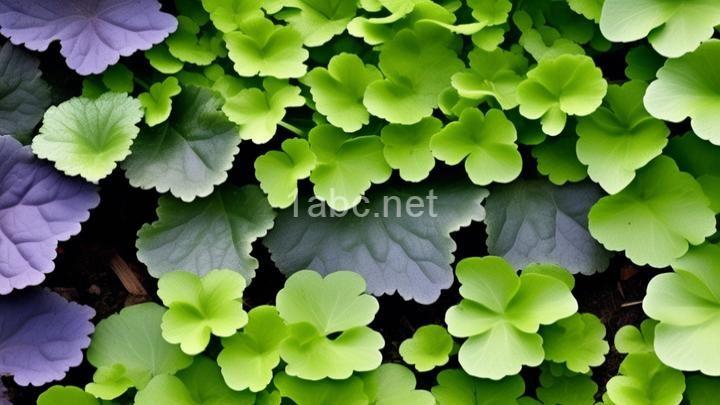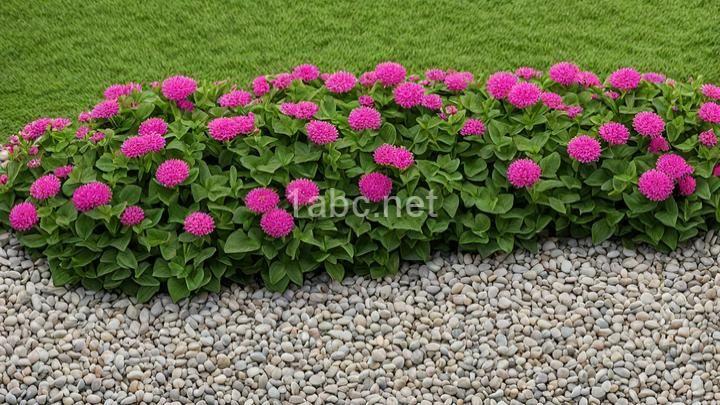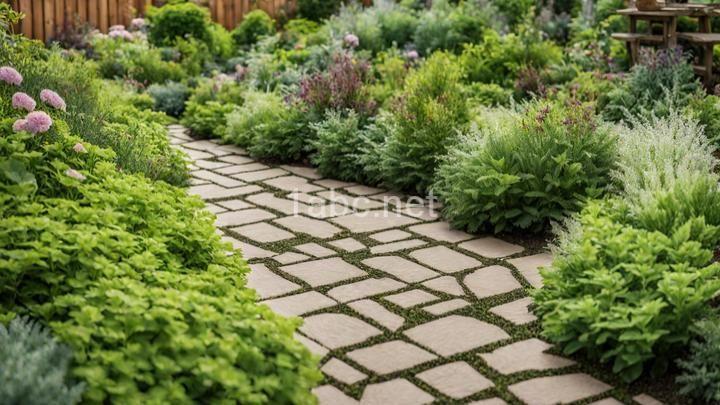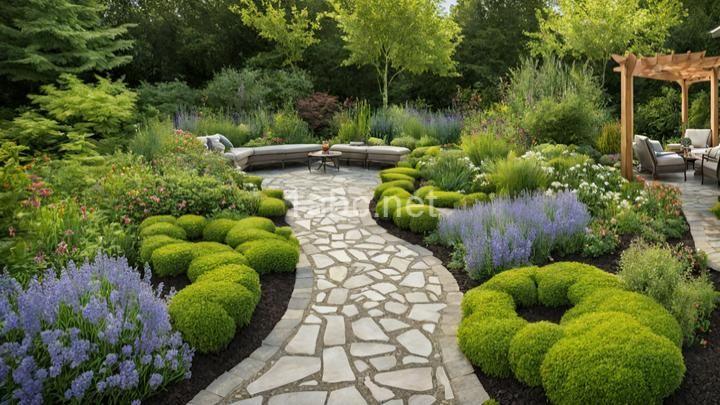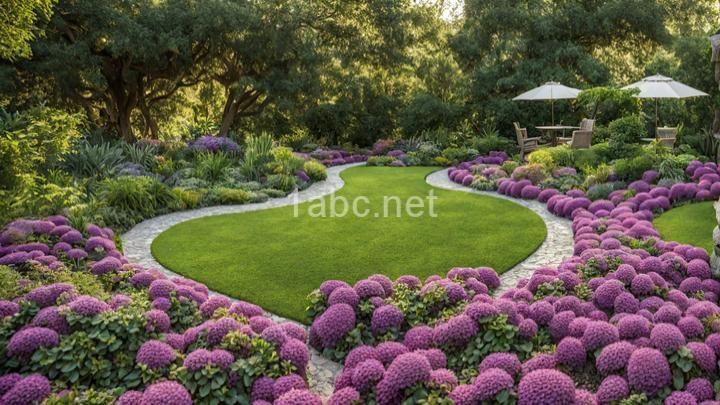From Bare to Beautiful: Using Ground Covers for a Low-Maintenance Garden Makeover
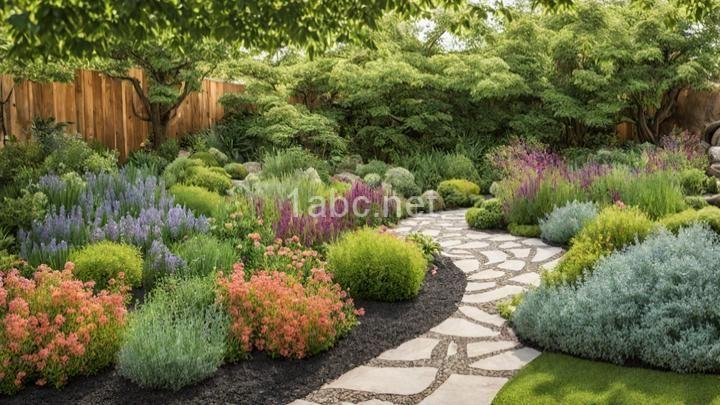
Introduction:
Hello fellow gardening enthusiasts! Are you tired of spending endless hours tending to your garden, only to be left with a lackluster and high-maintenance space? Well, fret no more! In this blog post, we will explore the wonderful world of ground covers and how they can transform your garden into a low-maintenance oasis. Ground covers are not only aesthetically pleasing, but they also offer a multitude of benefits, from preventing soil erosion to suppressing weeds. So, let's dive in and discover how ground covers can be the key to a beautiful and hassle-free garden.
Section 1: Understanding Ground Covers
Before we delve into the nitty-gritty of choosing and planting ground covers, let's first understand what they are and their purpose in landscaping. Ground covers are low-growing plants that spread horizontally, covering the ground and forming a dense carpet-like effect. They serve as a living mulch, protecting the soil from erosion, conserving moisture, and preventing weed growth.
There are various types of ground covers that thrive in different climates. For instance, if you live in a sunny region, creeping thyme or sedum might be the perfect choice. On the other hand, if shade dominates your garden, vinca minor or hostas could be the ideal options. It's essential to select ground covers that are well-suited to your specific climate and growing conditions to ensure their success.
Section 2: Assessing Your Garden's Needs
Now that we have a grasp on what ground covers are, it's crucial to assess your garden's specific needs before diving into the world of ground cover options. Take a moment to consider factors such as sun exposure, soil type, and water availability. Some ground covers thrive in full sun, while others prefer partial shade or even full shade. Understanding these requirements will guide you in making informed choices.
Additionally, evaluate your garden's existing vegetation and landscape design flaws. Are there areas where the soil erodes easily? Are there patches where weeds constantly take over? By identifying these problem areas, you can strategically choose ground covers that address these issues and improve the overall look of your garden.
Section 3: Choosing the Right Ground Cover
Now that you have assessed your garden's needs, it's time to choose the right ground cover for your specific requirements. Factors such as growth habit, foliage color, flowering period, and maintenance requirements should be considered. For example, if you desire a ground cover that spreads quickly to fill in large areas, opt for a vigorous grower like periwinkle (vinca minor). However, if you prefer a ground cover with attractive foliage, consider sedums with their vibrant hues.
To help you in your decision-making process, here are some recommended ground covers for different purposes:
- Erosion control: creeping juniper, English ivy, or crownvetch.
- Weed suppression: pachysandra, lamb's ear, or sweet woodruff.
- Ground cover for slopes: creeping phlox, creeping thyme, or creeping jenny.
Section 4: Preparing Your Garden for Ground Covers
Now that you have chosen the perfect ground cover for your garden, it's time to prepare the stage for their arrival. Start by removing any existing vegetation in the area where you plan to plant the ground cover. This ensures that the ground cover will have ample space to spread and establish itself. Next, improve the soil quality by adding organic matter such as compost or well-rotted manure. This will provide essential nutrients and improve drainage.
Speaking of drainage, addressing any existing issues is crucial for the success of your ground cover. Ensure that the area is well-drained to prevent waterlogging, which can lead to root rot. If needed, implement drainage solutions such as creating swales or installing French drains.
Weeds can be a persistent problem, even after ground covers are established. To prevent weed growth, consider using a weed barrier, such as landscape fabric, before planting your ground cover. This will prevent weeds from competing with your chosen ground cover for nutrients and space.
Section 5: Planting and Maintenance Tips
Now that your garden is prepped and ready, it's time to plant your ground covers and ensure their ongoing health and beauty. Start by spacing the plants according to their specific requirements. Some ground covers need to be planted closer together to create a dense carpet-like effect, while others require more space. Follow the recommended spacing guidelines to achieve the desired coverage.
Incorporating mulch around your newly planted ground covers will help retain moisture, suppress weeds, and regulate soil temperature. Organic mulches, such as wood chips or shredded leaves, are excellent choices. Avoid placing mulch directly against the plant stems to prevent rot and other moisture-related issues.
Watering is crucial during the establishment phase, so make sure to provide your ground covers with adequate moisture. Once established, most ground covers are relatively drought-tolerant, but it's still important to monitor their water needs, especially during prolonged dry spells.
Maintenance tasks for ground covers tend to be minimal but should not be overlooked. Regular pruning helps maintain the desired shape and prevents overcrowding. Fertilizing may not be necessary for most ground covers, as they are typically low-nutrient plants. However, if your ground cover appears yellowish or lacks vigor, a light application of a balanced fertilizer can provide a boost.
Pests can occasionally be a nuisance, so keep an eye out for any signs of damage. Slugs, snails, and aphids are common culprits. Implement organic pest control methods, such as handpicking or using insecticidal soap, to keep these pesky critters at bay.
Conclusion:
Congratulations on making it to the end of this comprehensive guide on using ground covers for a low-maintenance garden makeover! We have covered everything from understanding ground covers to choosing the right one for your garden, preparing your garden beds, and maintaining your ground covers for optimal growth and beauty.
By incorporating ground covers into your landscape, you can transform your garden from a bare and high-maintenance space into a lush and low-maintenance oasis. The benefits of ground covers, from erosion control to weed suppression, are undeniable. So why wait? Start your transformation journey today and create a beautiful and hassle-free garden that will be the envy of your neighbors.
Remember, gardening is a journey, and we would love to hear about your experiences with ground covers. Share your successes, challenges, and tips in the comments below. Happy gardening!
FREQUENTLY ASKED QUESTIONS
What is From Bare to Beautiful: Using Ground Covers for a Low-Maintenance Garden Makeover?
"From Bare to Beautiful: Using Ground Covers for a Low-Maintenance Garden Makeover" is a book or resource that provides information and guidance on using ground covers to transform a barren garden into a visually appealing and low-maintenance space. It likely offers tips and techniques on selecting suitable ground covers, their installation, and maintenance. The book aims to help homeowners or garden enthusiasts create an attractive outdoor space that requires less effort and upkeep.
How can ground covers transform my garden?
Ground covers can transform your garden in several ways:
- Weed suppression: Ground covers can help to suppress weed growth by shading the soil and preventing weed seeds from germinating. This can reduce the need for manual weeding and help to keep your garden looking neat and tidy.
- Moisture retention: Many ground covers have dense foliage that helps to retain moisture in the soil. This can be particularly beneficial in dry or arid climates, where water conservation is important. The ground covers act as a natural mulch and reduce evaporation from the soil, keeping your plants hydrated.
- Erosion control: If you have sloping areas in your garden, ground covers can help to prevent soil erosion. Their root systems help to stabilize the soil and prevent it from being washed away during heavy rain or wind. This is especially useful in areas prone to erosion.
- Aesthetics: Ground covers come in a wide range of colors, textures, and heights, allowing you to create interesting and visually appealing patterns in your garden. They can be used to create borders, fill in gaps between other plants, or provide a lush carpet-like effect. Ground covers can also be useful for covering bare patches of ground and adding visual interest to areas that might otherwise be left empty.
- Habitat creation: Ground covers provide shelter and food sources for beneficial insects, birds, and other small wildlife. By incorporating diverse and native ground covers into your garden, you can create a more balanced and ecologically friendly environment.
Overall, ground covers offer a low-maintenance and versatile solution to enhance the overall look, functionality, and ecological value of your garden.
What are the benefits of using ground covers?
Using ground covers in your garden or landscaping has several benefits:
- Weed suppression: Ground covers form a dense carpet-like growth that helps suppress the growth of weeds, reducing the need for manual weeding or chemical weed control.
- Moisture conservation: Ground covers act as a natural mulch, reducing evaporation and helping to retain moisture in the soil. This can be especially beneficial in regions with hot and dry climates.
- Erosion control: The dense network of roots and foliage provided by ground covers helps stabilize the soil, preventing erosion caused by wind or water runoff.
- Soil improvement: Ground covers can improve soil health by adding organic matter as they decompose. Some ground covers also have nitrogen-fixing properties, enriching the soil with this essential nutrient.
- Aesthetics and texture: Ground covers add visual interest to your garden, providing a lush, carpet-like appearance. They come in a variety of colors, textures, and heights, allowing you to create beautiful and unique landscapes.
- Reduced maintenance: Once established, ground covers generally require less maintenance compared to traditional grass lawns. They typically have slower growth rates and may only need occasional trimming or mowing.
Overall, using ground covers can greatly enhance the beauty and functionality of your garden while reducing maintenance and promoting a healthier environment.
Are ground covers suitable for all types of gardens?
Ground covers can be a great addition to many types of gardens. However, their suitability may vary depending on factors such as climate, soil conditions, and specific garden requirements. Some ground covers thrive in shady areas, while others prefer full sun. Additionally, certain ground covers are more tolerant of drought or wet soil conditions, while others are better suited for erosion control. It's important to consider these factors and choose ground covers that are well-suited to the specific needs and conditions of your garden.
